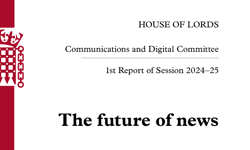
Last week saw the publication of the Kerslake Report, which reviewed how Manchester dealt with last May’s terrorist attack.
Much of the report focused on the actions of the fire service, but the role of the media came under the spotlight too.
Sadly, the report found that, “most participants who commented on their experience of the media in the attack aftermath were negative. People talked about feeling ‘hounded’ and ‘bombarded’.”
The report resolved that “this, surely cannot be as good as it gets” and made four, I thought rather woolly, recommendations, including IPSO reviewing the operation of its code. Putting aside the possibility that some of the miscreants did not work for IPSO-regulated papers, it is hard to see the report making any material difference to the next media circus.
The media’s need for information will always sit uneasily with people’s desire for privacy, when major international news stories unfold; many news organisations get the balance right, but clearly lots don’t…
On a more positive note, it was interesting to see the distinction the families made between local and national press (“The information in the Manchester Evening News was correct but when national press picked it up it would change,” said one, and “Our local paper ... they’ve been amazing,” said another) and between UK press and international press (“international media used an image taken inside the foyer in which the deceased could be identified,” the report found).
Clearly, proximity matters. The closer a reporter is based, the more likely they are to behave compassionately and be trusted.
The local press, even in these straitened times, can still draw on huge reserves of local trust and affection. The challenge, of course, remains: how to monetise that close bond.
(The report can be read here. The sections relating to the media are on pages 54-57 and 198-202.)












